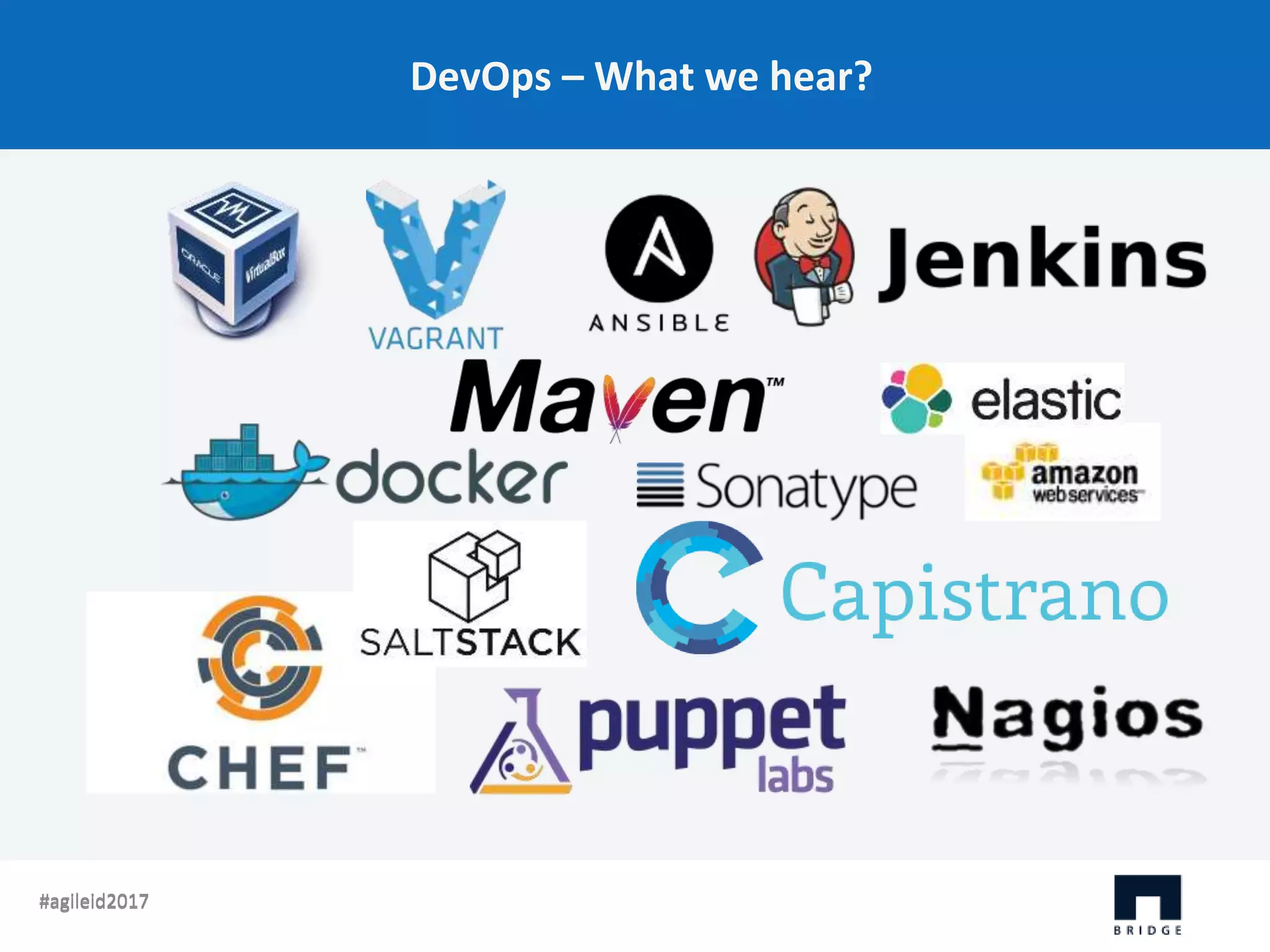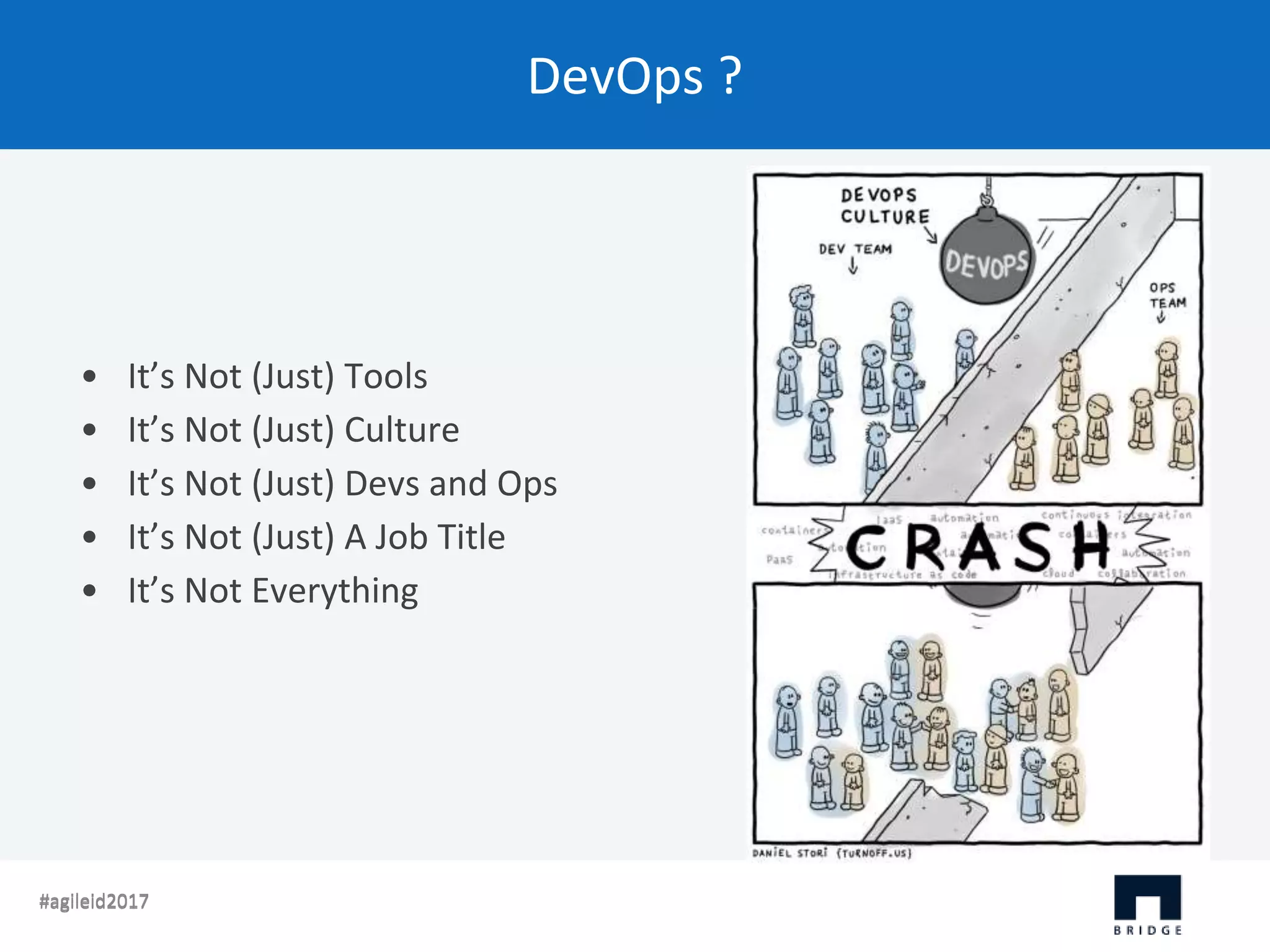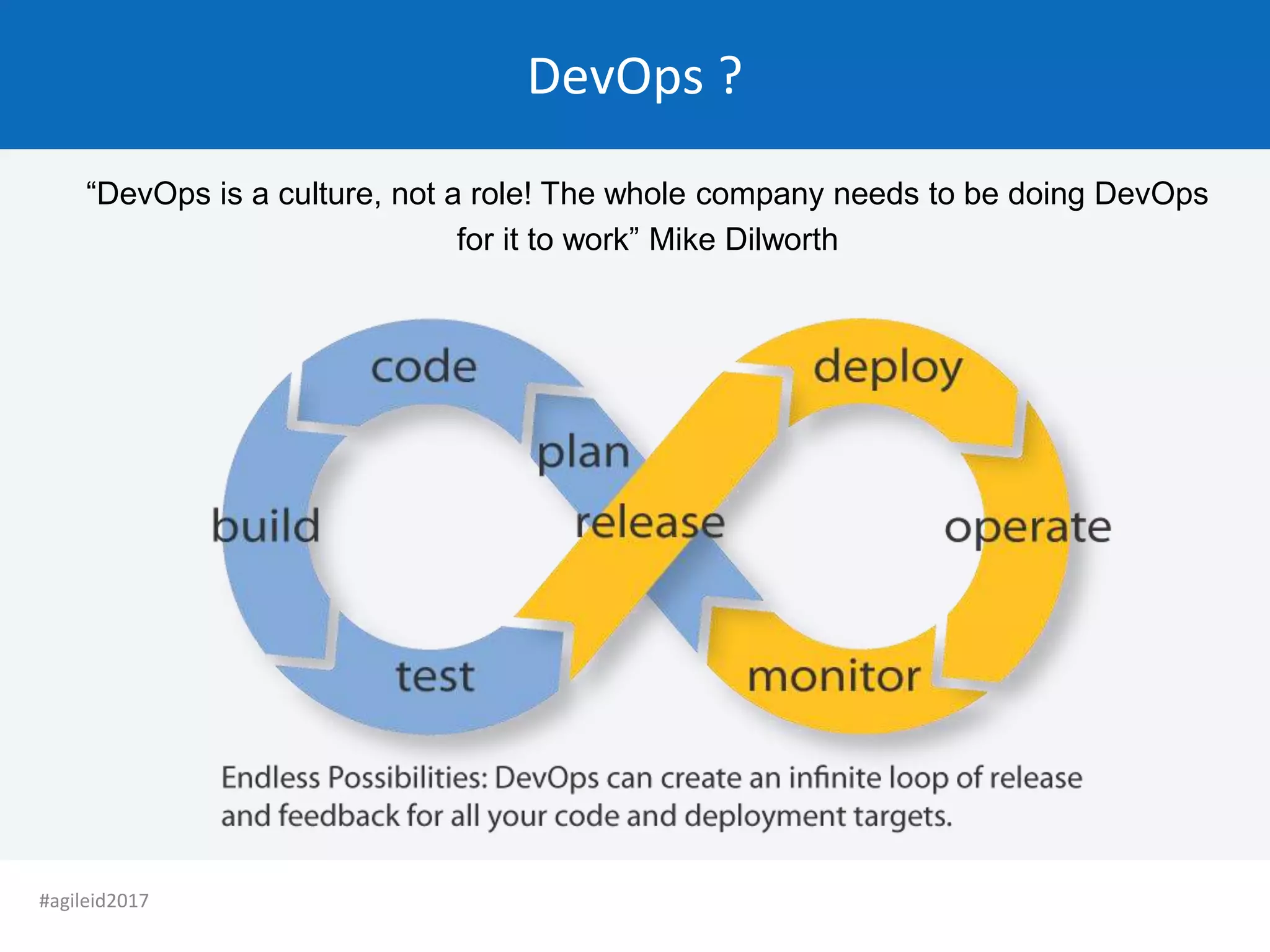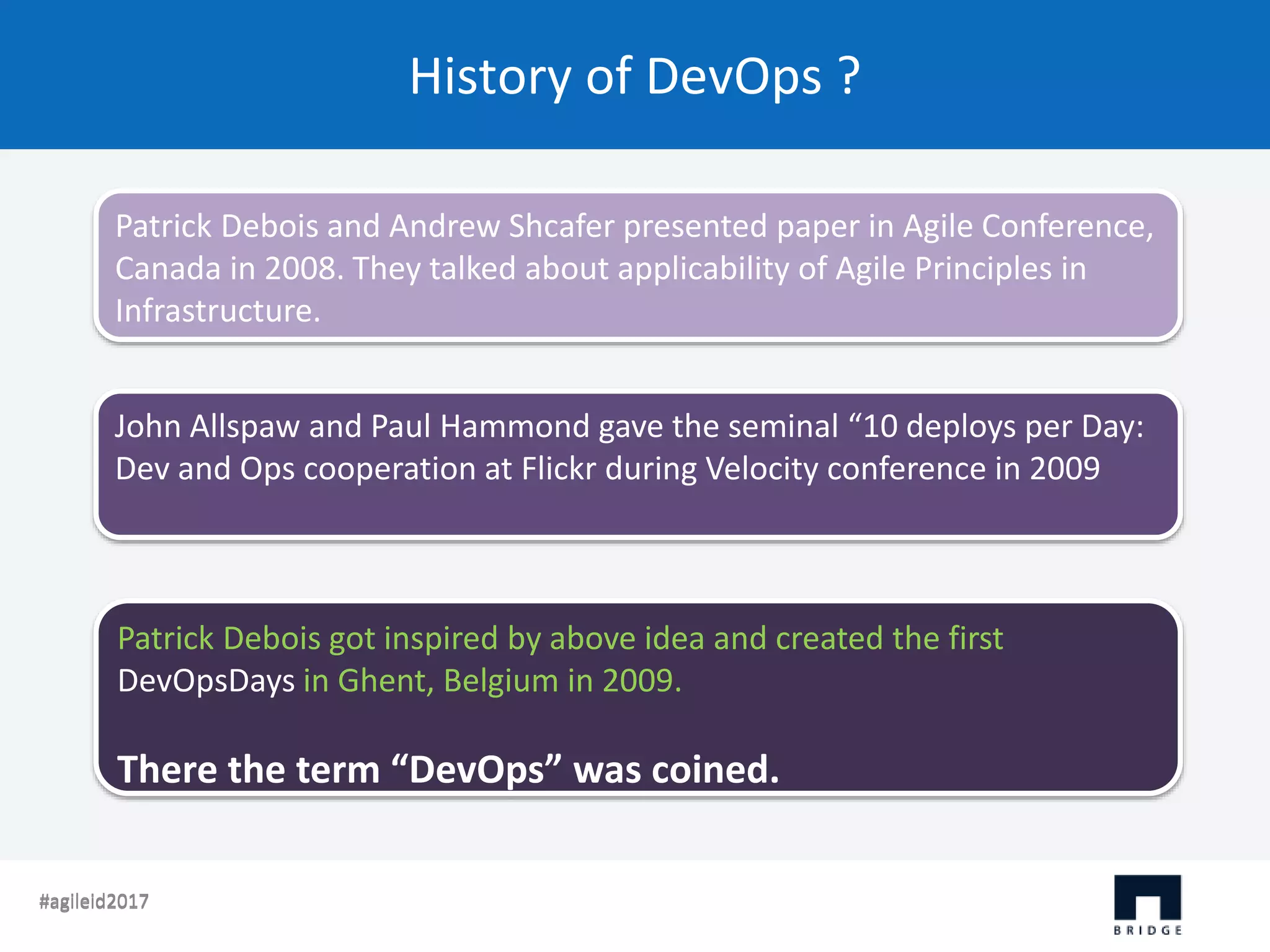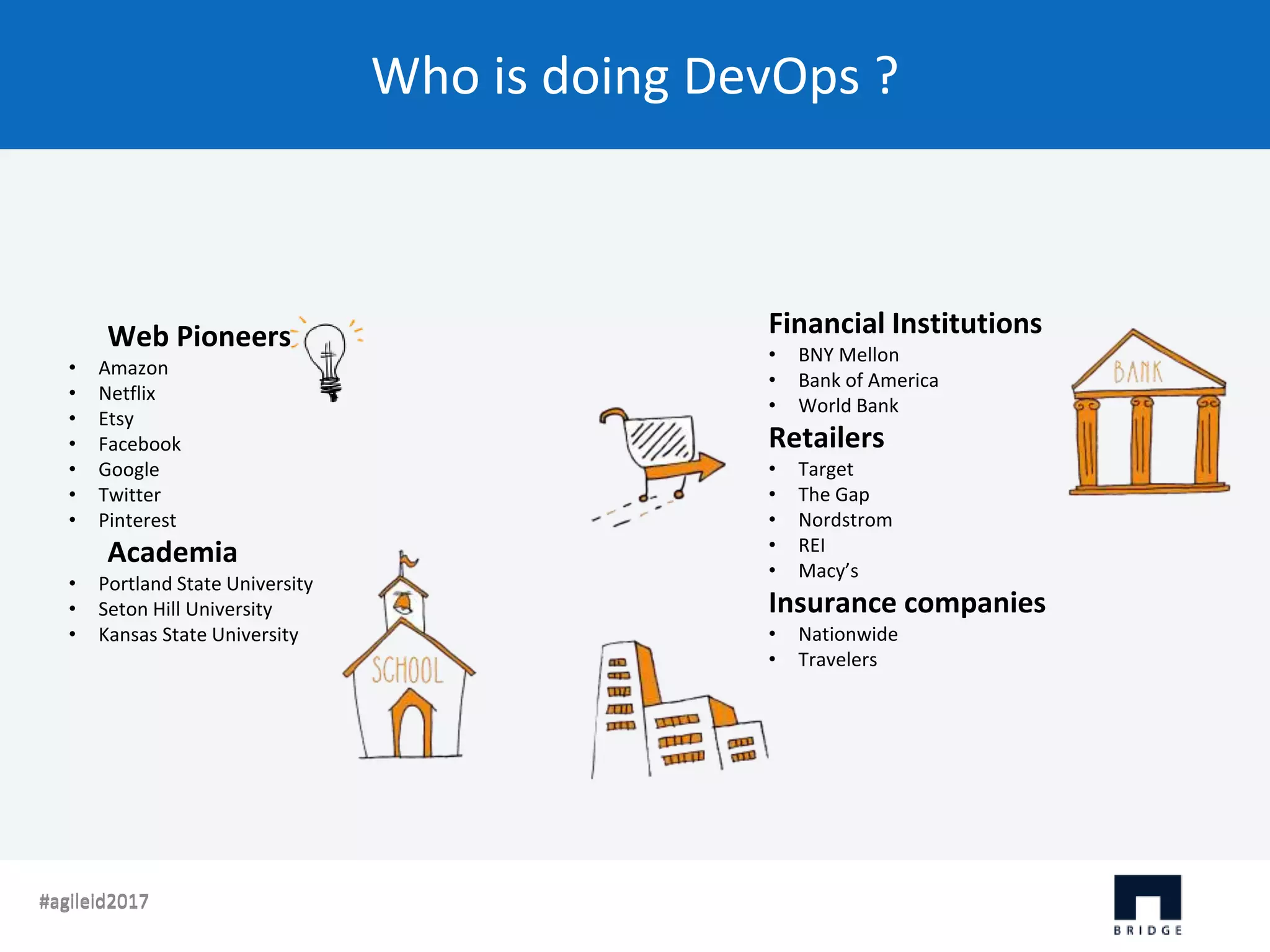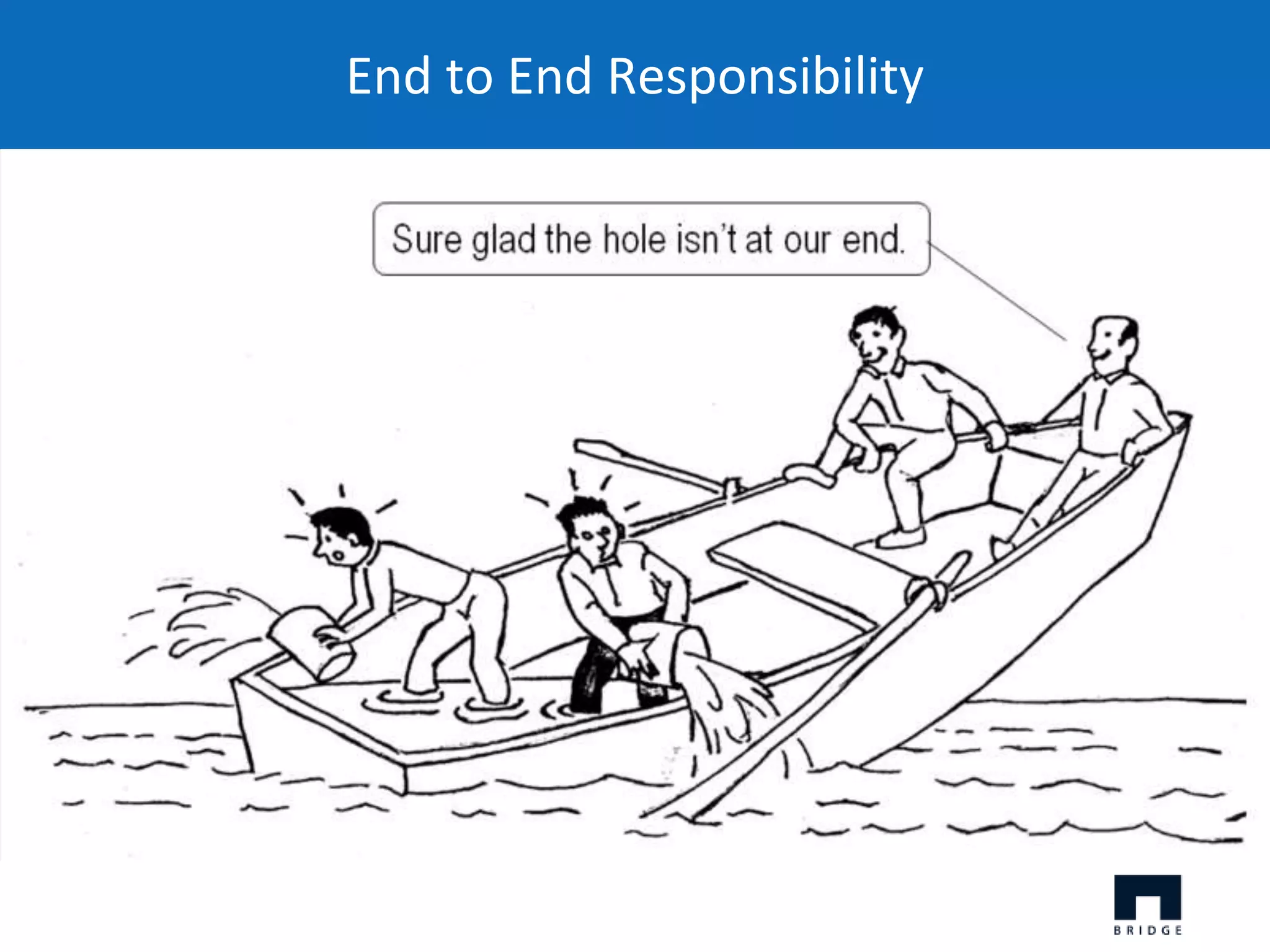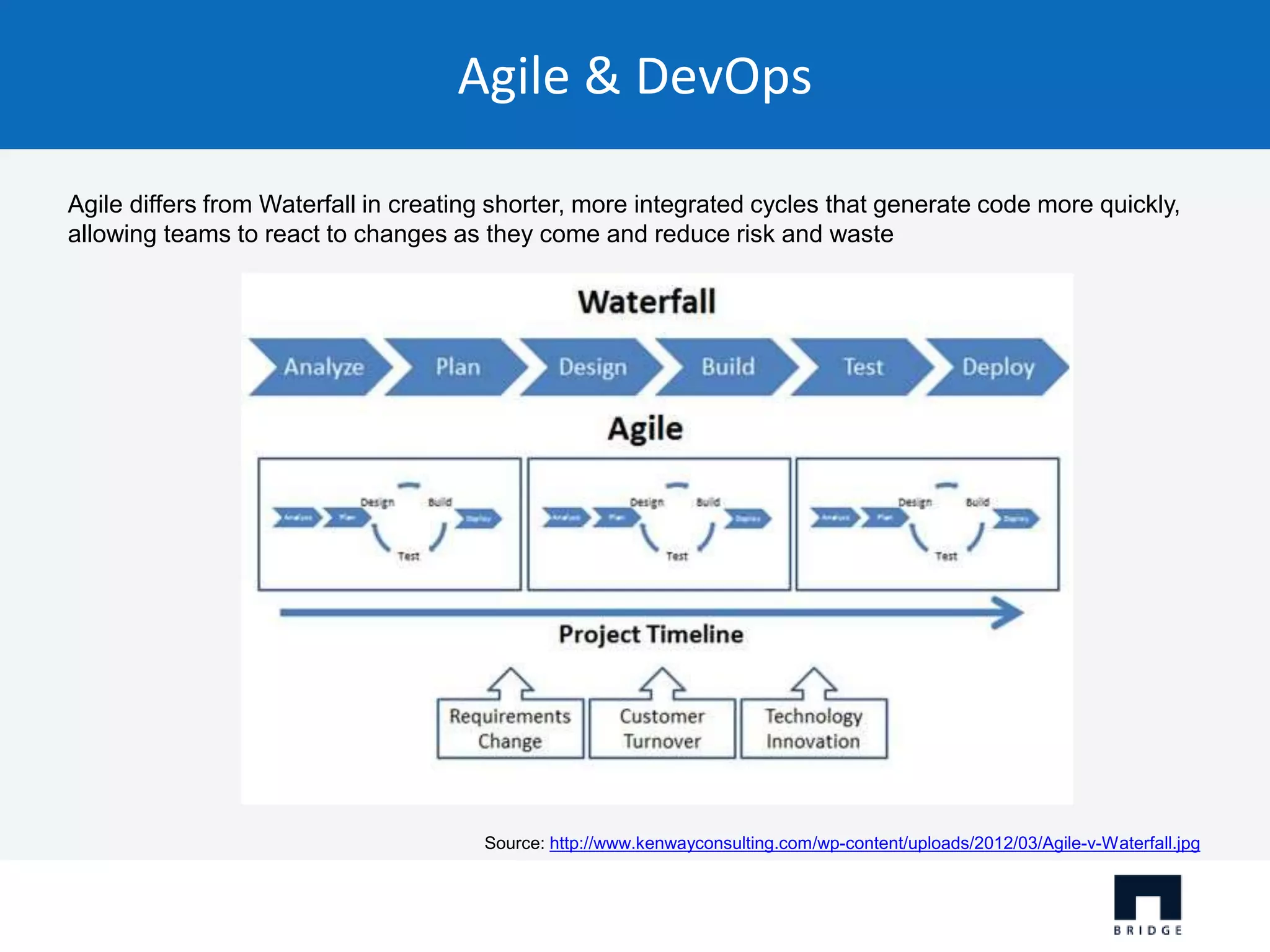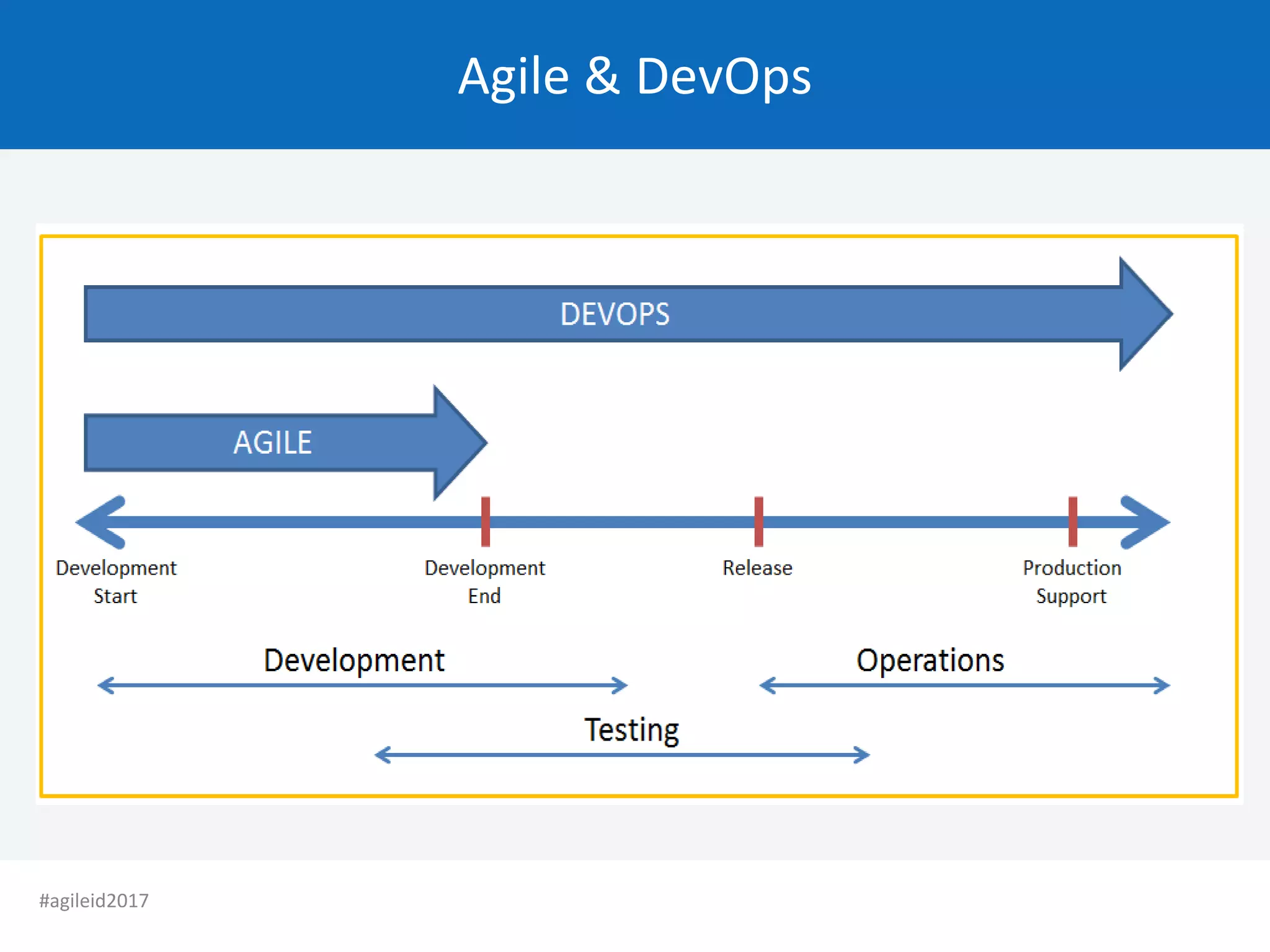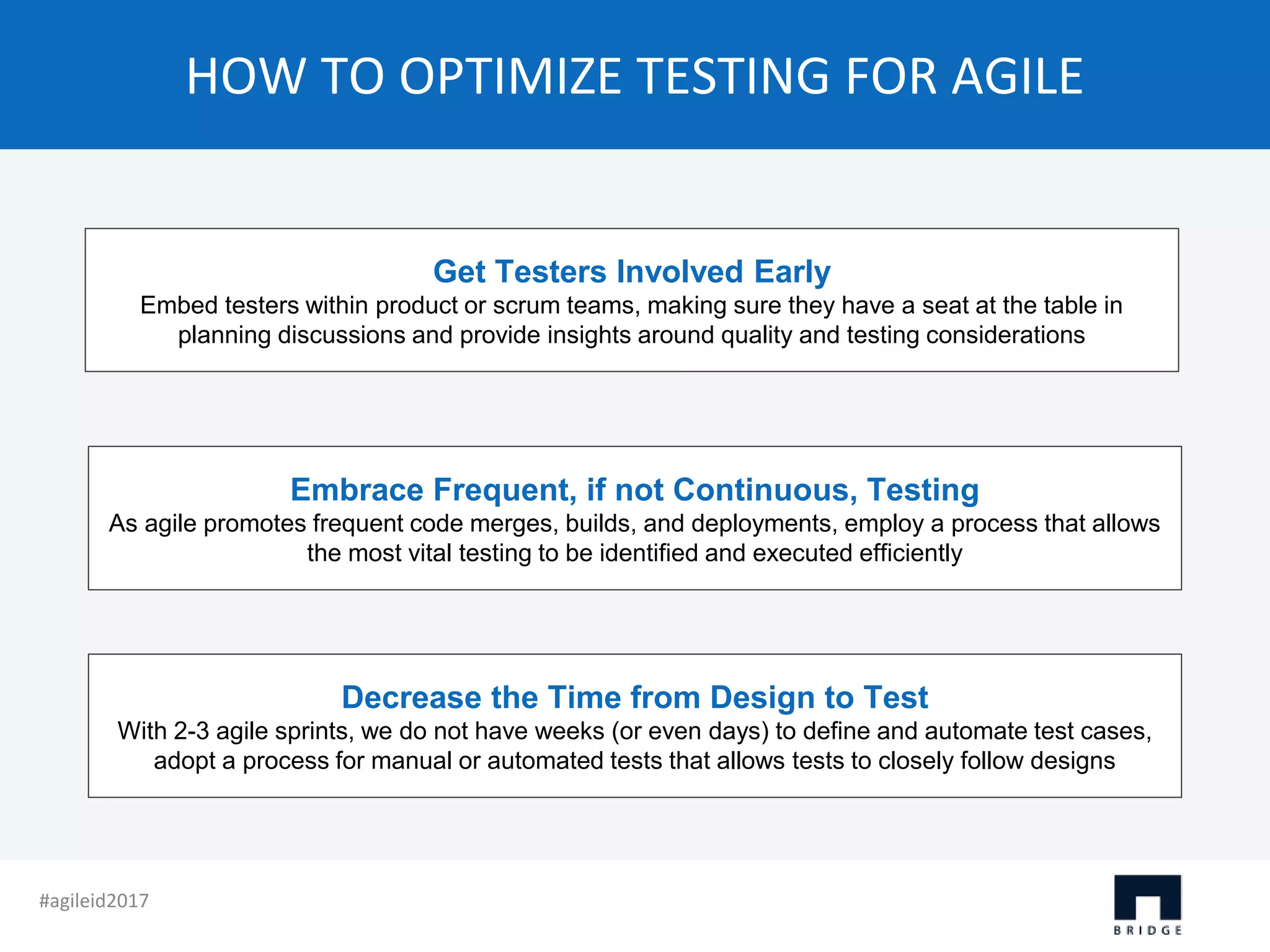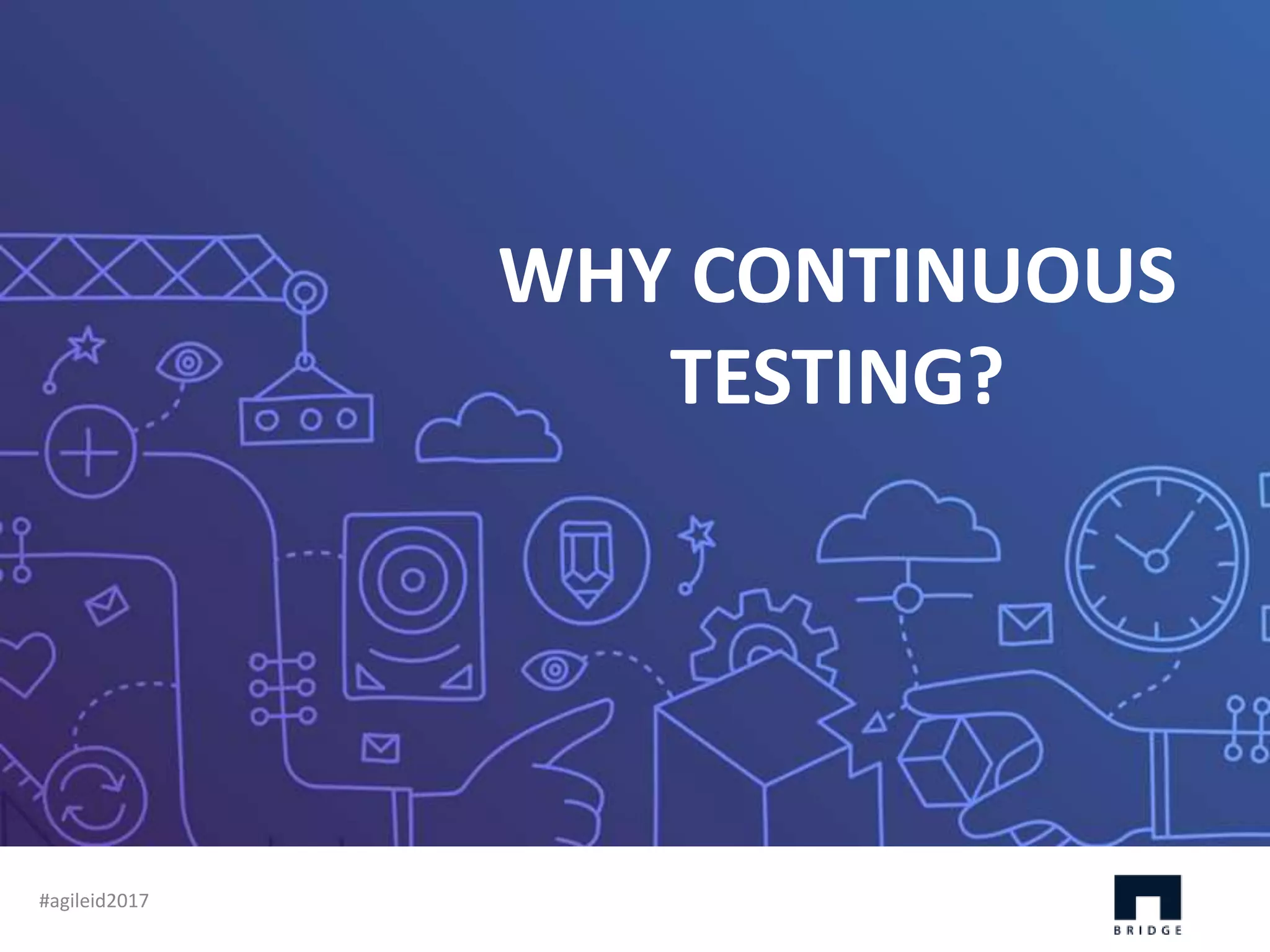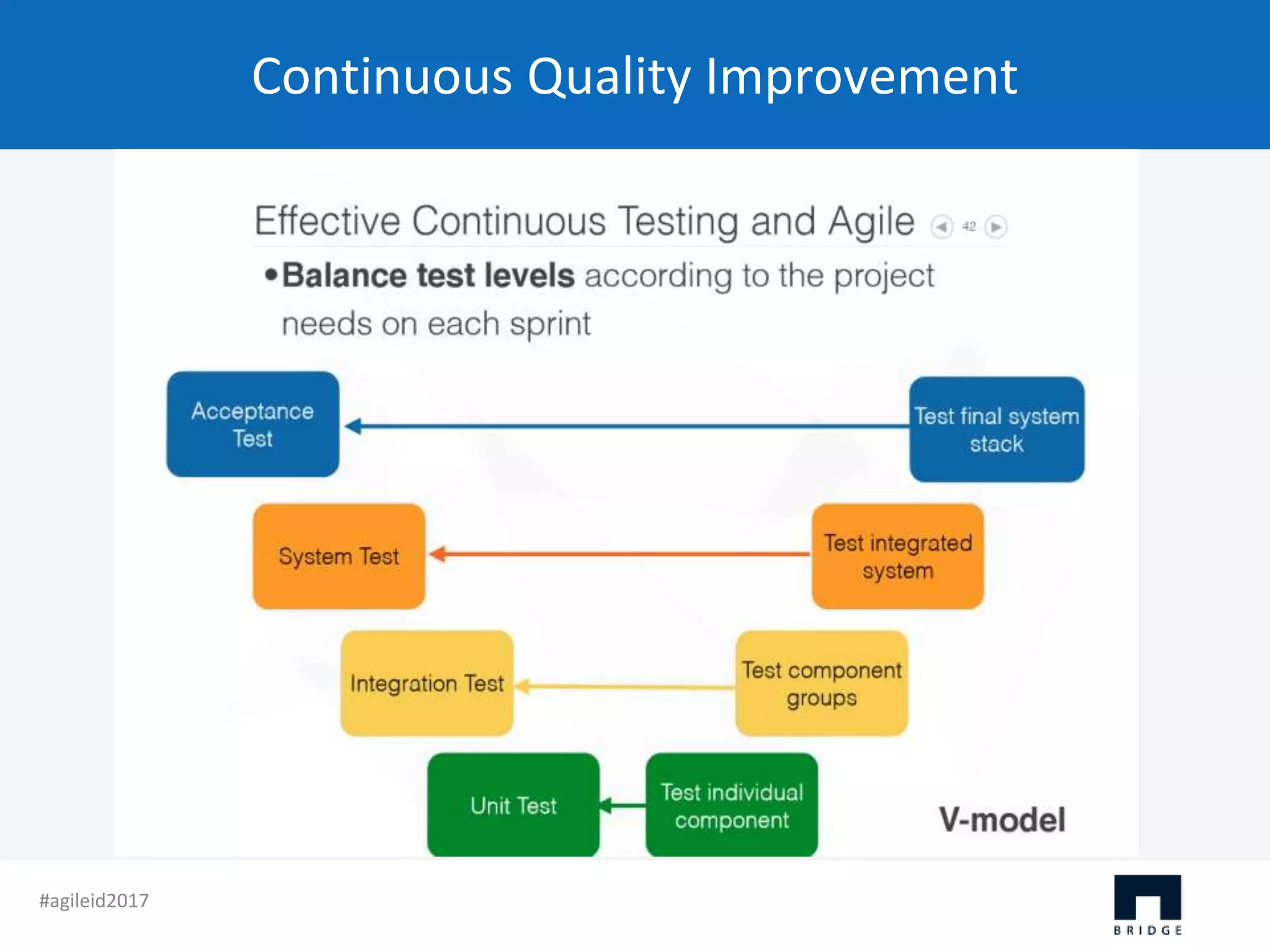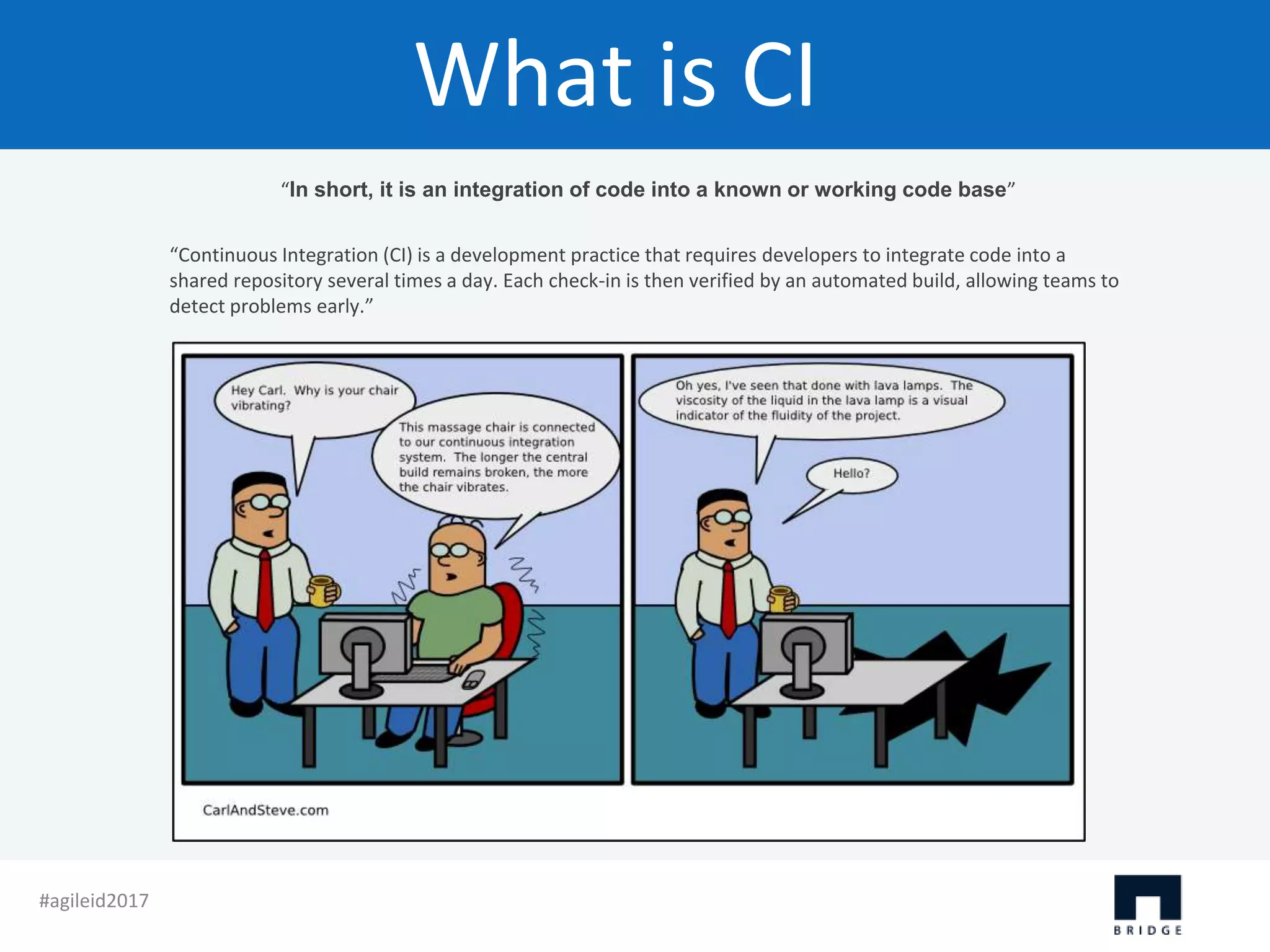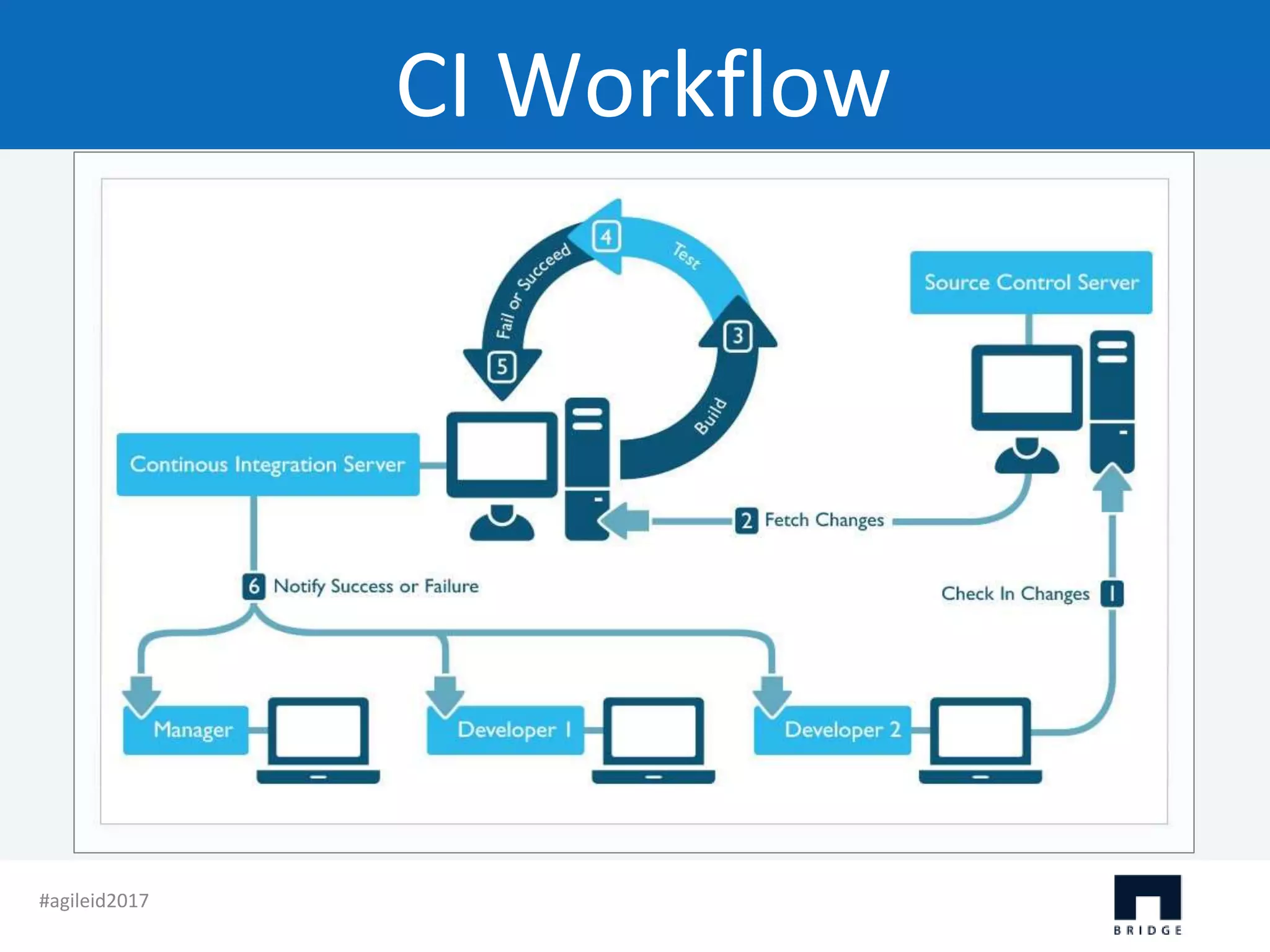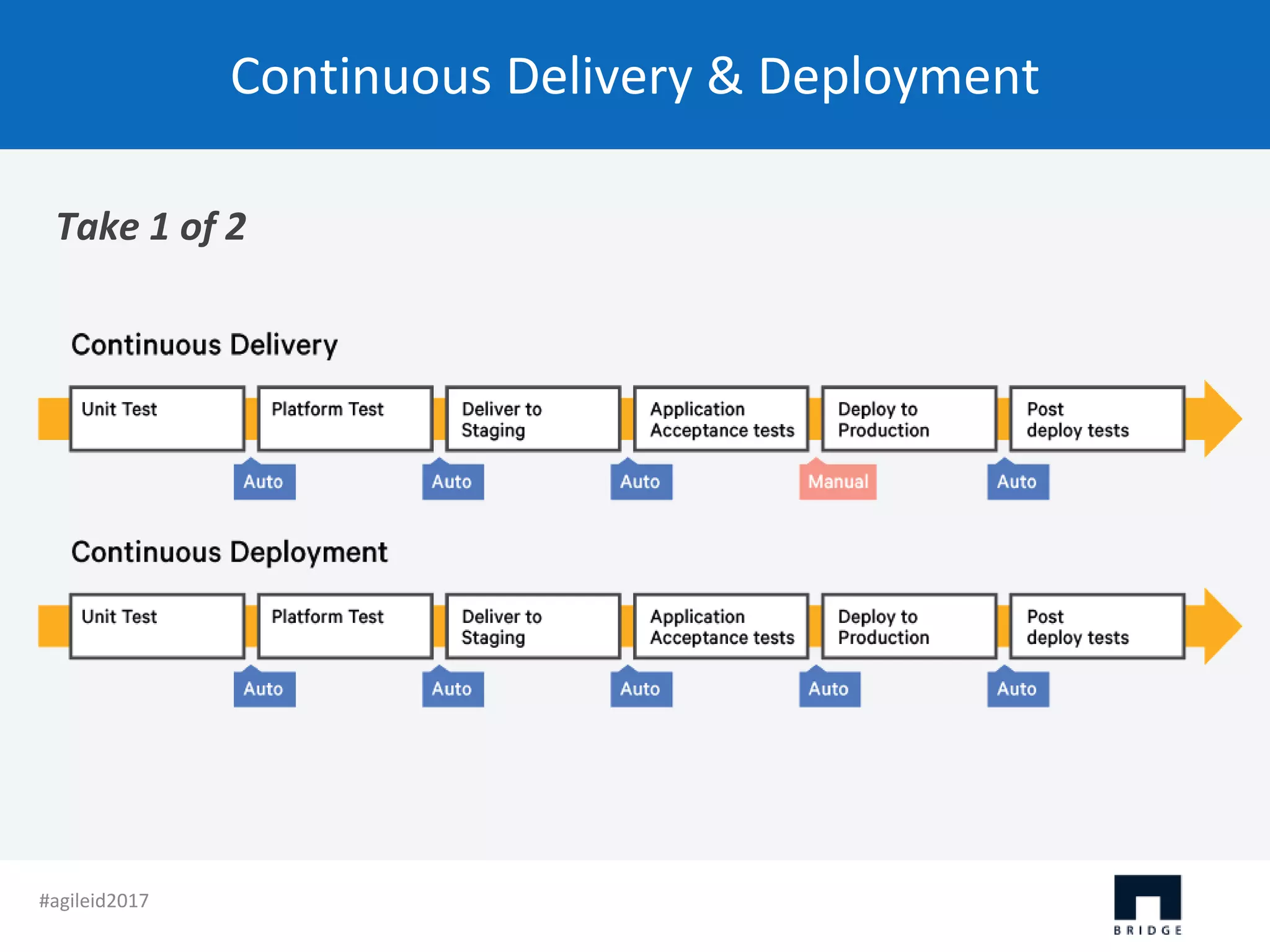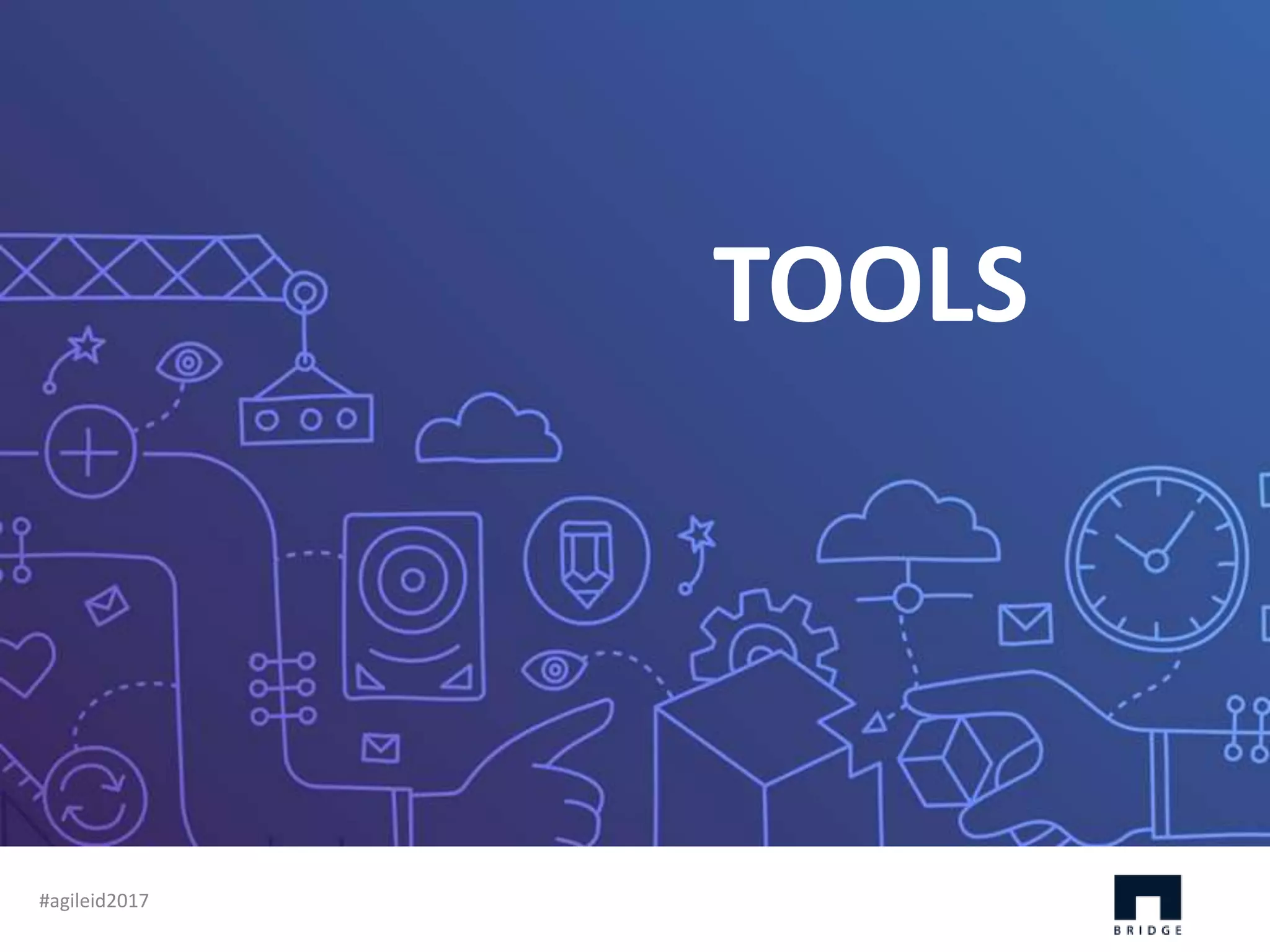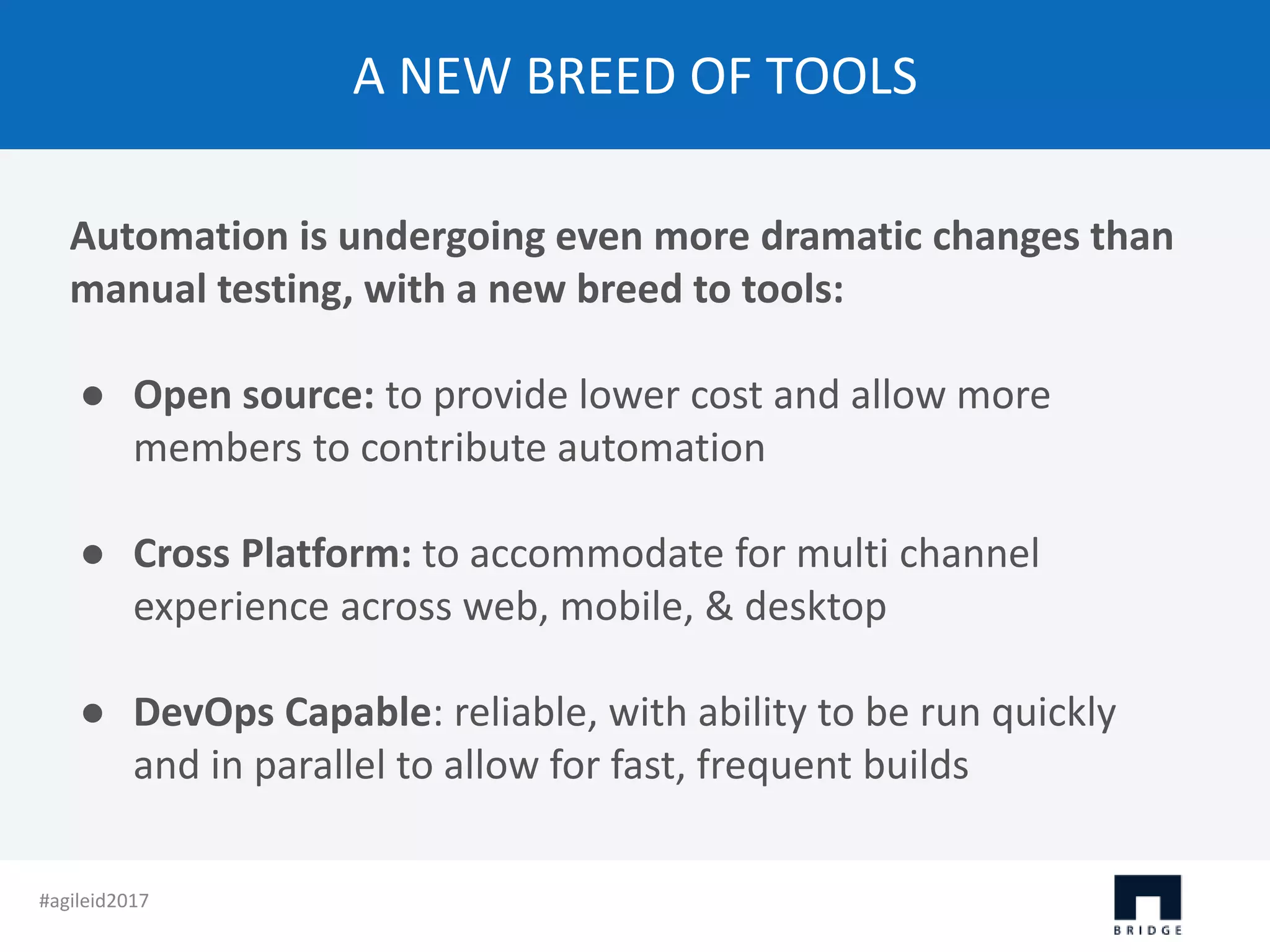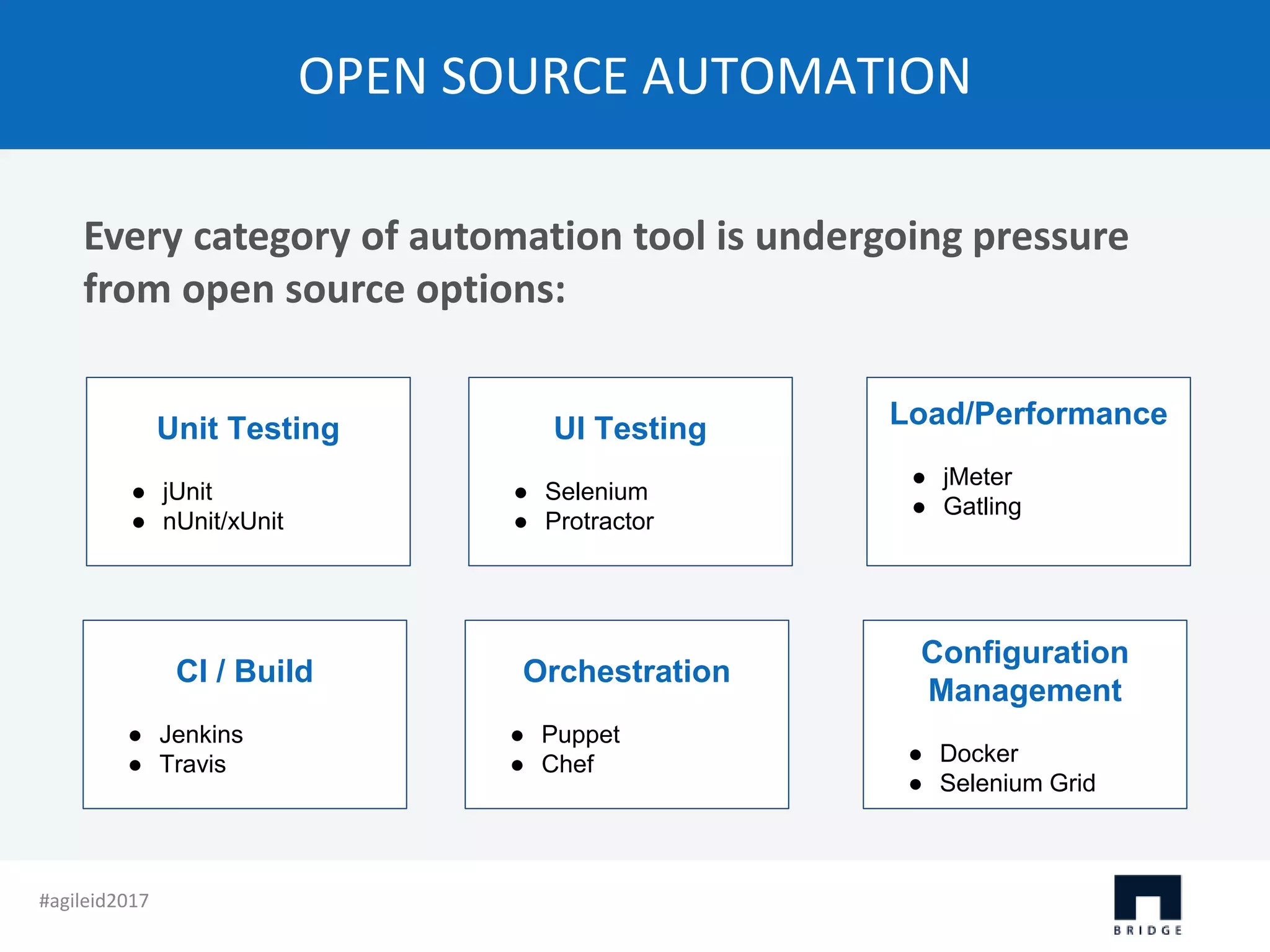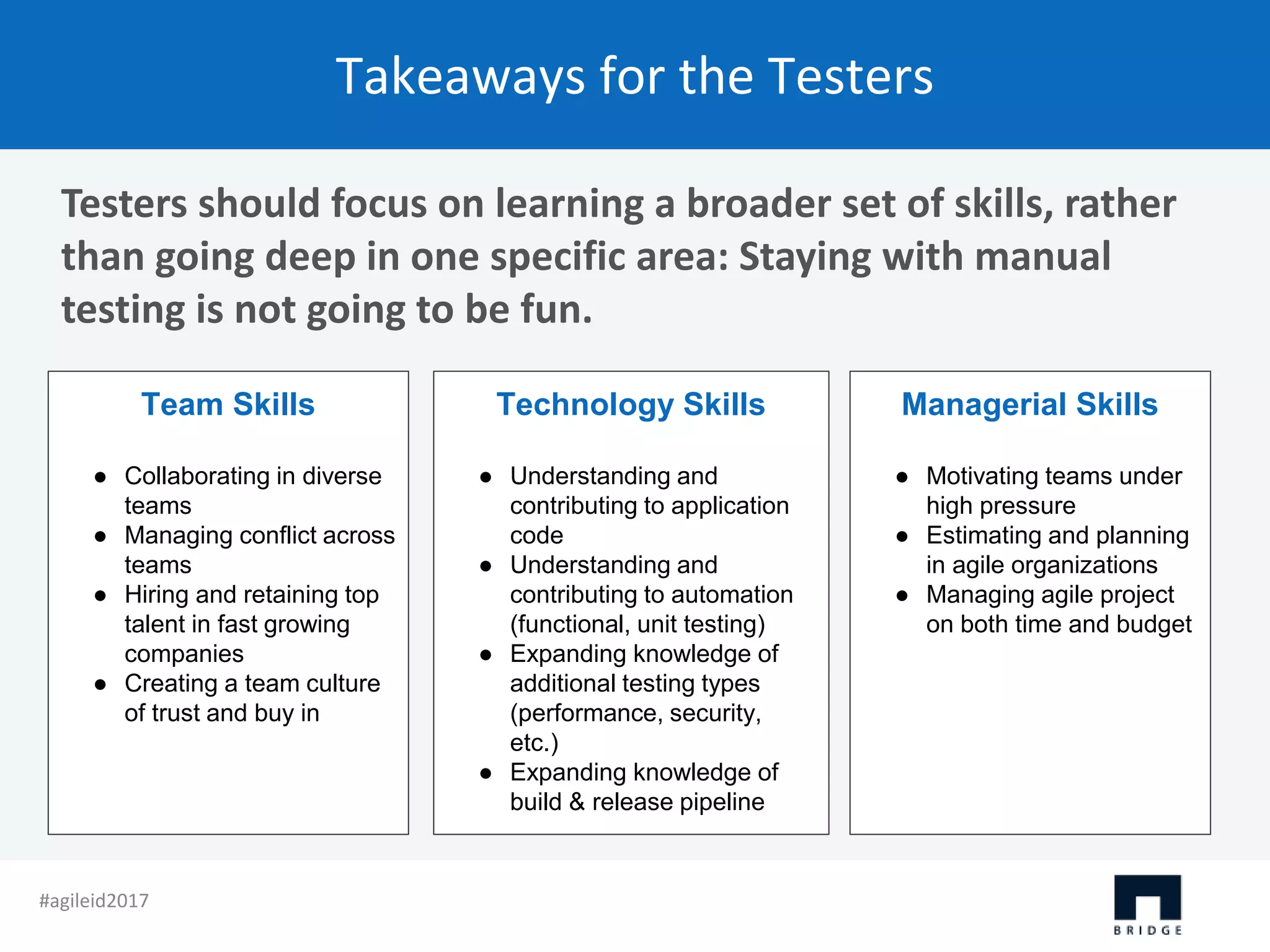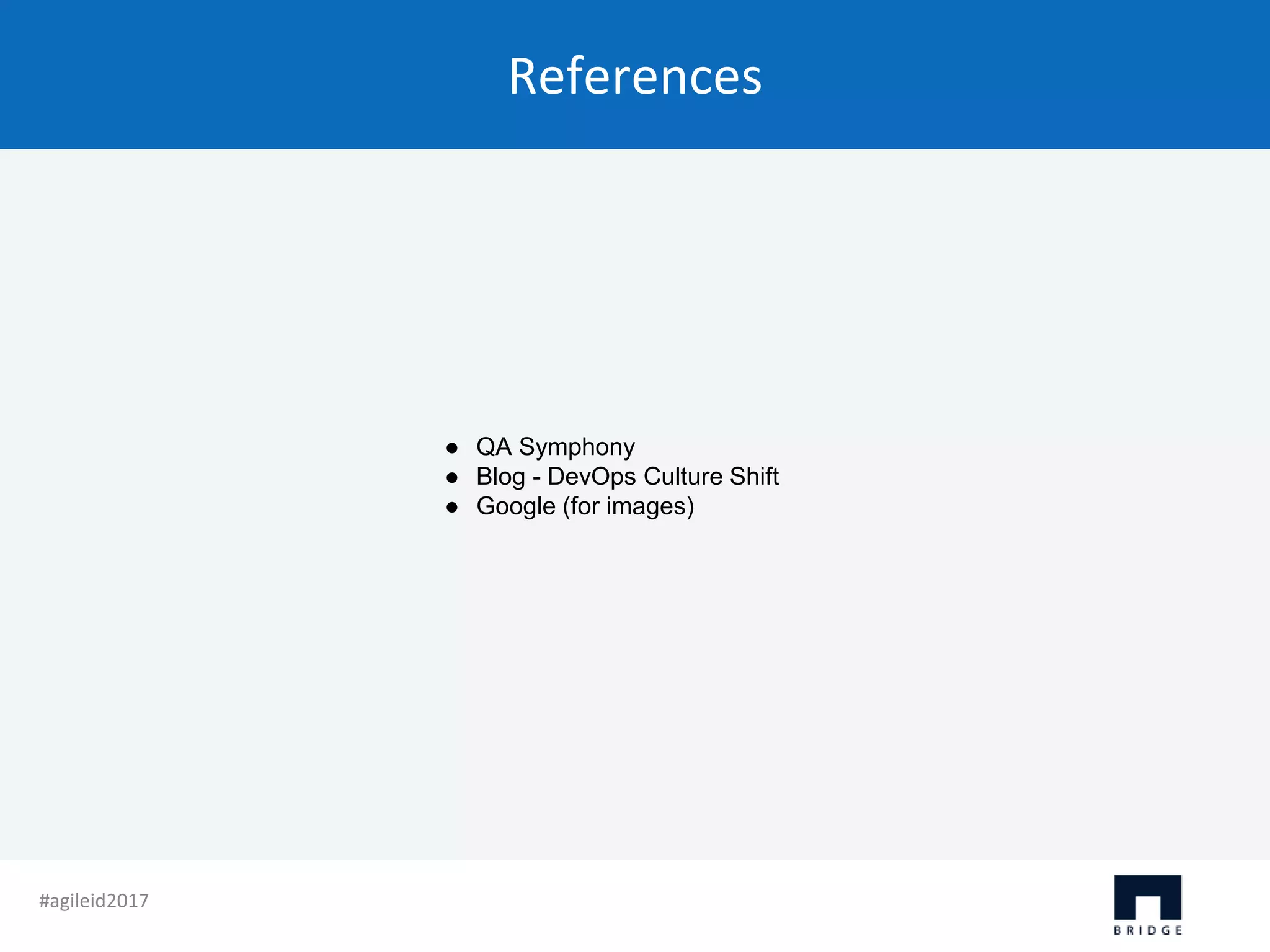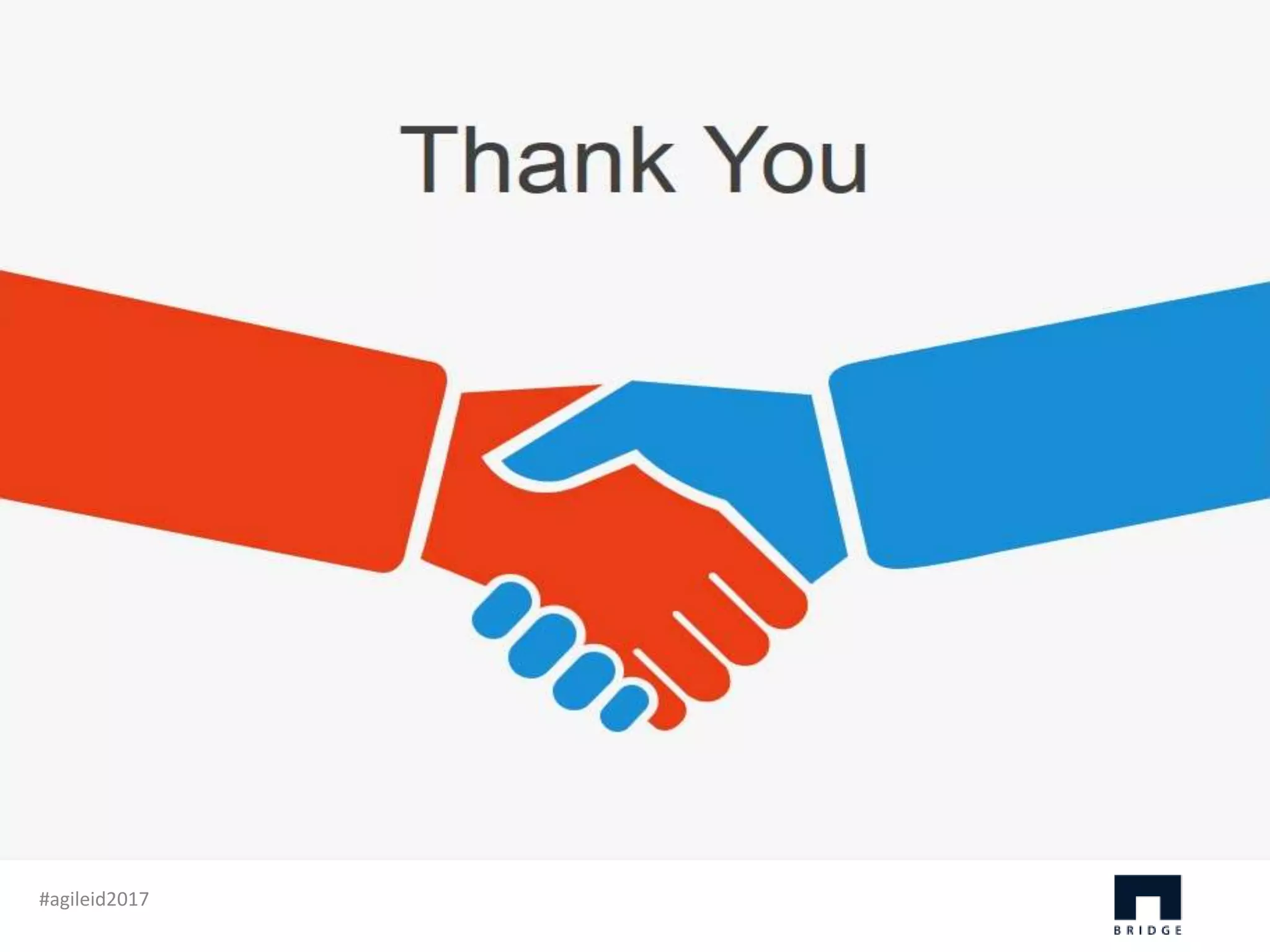This document provides an agenda and overview for a presentation on continuous testing, integration, and delivery in an Agile/DevOps environment. The summary includes: 1. The presentation covers the history and concepts of DevOps, how it differs from traditional development practices, and its benefits in allowing for more frequent code integration and delivery. 2. When adopting Agile and DevOps practices, testing must also be continuous and aligned with the new development process, with testing occurring more regularly and closely following development. 3. Continuous integration, delivery, and deployment involve automating the integration and testing of code changes, allowing teams to detect issues early and rapidly release updates that pass testing. Automated testing is key to supporting
![September 25, 2015 Introduction to QASymphony for [INSERT COMPANY NAME] # Continues testing in AGILE The audio for this webinar is delivered through your computer. There is no dial-in number. Make sure your speakers are turned up or use a pair of headphones. Don’t Forget About Testing PRACTICAL DEVOPS & Continuous Delivery](https://image.slidesharecdn.com/practicaldevopsandcontinousdelivery-171127111530/75/Practical-Devops-and-Continous-Delivery-1-2048.jpg)

